Tooth Filling
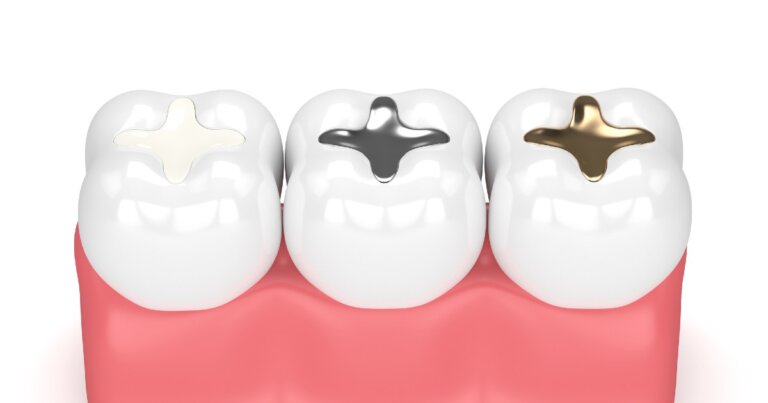
What Is A Tooth Filling?
When it comes to maintaining good oral health, one of the most common procedures you may encounter is a Tooth Filling, also known as Dental Filling. If you’ve ever had a cavity, chances are your dentist has discussed the possibility of filling it. Dental fillings are an integral part of restorative dentistry and play a crucial role in preserving the health and functionality of your teeth.
Tooth filling, also known as dental filling or simply filling, is a treatment used to repair damaged or decayed teeth. It involves the removal of decayed material from a tooth and replacing it with a biocompatible filling material, such as composite resin, glass ionomer, or amalgam; to restore the tooth’s shape, strength, and function. Depending on the extent of decay and the location of the cavity, your dentist will help you choose the most suitable option.
Before you deciding on whether A Dental Filling are right for you, there are some things you should know:
- Who Needs A Tooth Filling?
- What Are The Advantages Of A Tooth Filling?
- What Are Different Types Of Dental Fillings?
- How Much Does A Tooth Filling Cost?
- What Are The Steps In The Tooth Filling Procedure?
- Can I Have A Tooth Filling If I Am Pregnant?
- How Long Does A Tooth Filling Last?
- What Are Common Problems with A Tooth Filling?
If you have any further questions about A Tooth Filling or other dental services offered at Atlas Dental, please contact us.

Free phone consultation
Have questions about tooth fillings? Schedule a free phone consultation with our Toronto dentist.

5 star google reviews
Our patients love us! See for yourself why more and more people are choosing Atlas Dental for their dental fillings.

Book Emergency tooth filling
Do you think you have cavities and need an appointment? Book an emergency tooth filling online.
Who Needs a Tooth Filling?
Dental Fillings are typically recommended for individuals who have experienced tooth decay or cavities. Tooth decay occurs when harmful bacteria in the mouth produce acids that erode the protective layer of the tooth, known as enamel. If left untreated, this decay can progress deeper into the tooth, resulting in pain, sensitivity, and potential tooth loss.
While regular brushing, flossing, and routine dental check-ups can help prevent tooth decay, some people may still develop cavities due to various factors, including:
- Poor oral hygiene: Inadequate brushing and flossing can lead to the buildup of plaque, a sticky film containing bacteria. The bacteria in plaque produce acids that attack tooth enamel, increasing the risk of cavities.
- Diet: Consuming excessive sugary and acidic foods and drinks can contribute to tooth decay. Bacteria in the mouth feed on sugars and produce acids that damage the teeth.
- Dry mouth: Saliva plays a crucial role in neutralizing acids and maintaining a healthy oral environment. Reduced saliva flow, often caused by certain medications or medical conditions, can increase the risk of cavities.
- Tooth structure: Deep grooves or pits on the surfaces of teeth can make them more susceptible to decay as they provide ideal hiding spots for bacteria.
- Age: Children and older adults are more prone to tooth decay. Children may have difficulty maintaining proper oral hygiene habits, while older adults may experience receding gums, exposing the tooth roots to decay.
- Previous dental work: If you have existing dental restorations, such as older dental filling or dental crowns, they may need to be replaced if decay develops around or underneath them.
When you visit your dentist for a routine examination or experience symptoms such as toothache, sensitivity to hot or cold, visible holes or pits on your teeth, or discomfort while eating, your dentist will assess your oral health and determine if a tooth filling is necessary.
It is important to address cavities promptly. If left untreated, tooth decay can progress and lead to more extensive damage, potentially requiring more invasive and costly dental procedures in the future. If you have further questions about Tooth Fillings, please contact us.
What Are The Advantages Of A Tooth Filling?
Tooth fillings offer several advantages for individuals with cavities or tooth decay. These restorative dental treatments can effectively address the damage caused by decay and provide numerous benefits, including:
- Halting decay progression: Tooth fillings are designed to remove the decayed portion of the tooth and seal the area to prevent further bacterial invasion. By addressing cavities in their early stages, fillings can stop decay from spreading deeper into the tooth, preserving more of the natural tooth structure.
- Restoring tooth functionality: Cavities can weaken the affected tooth, leading to pain and discomfort while chewing or biting. Tooth fillings reinforce the tooth’s strength and integrity, allowing you to resume normal functioning without pain or sensitivity.
- Preserving natural teeth: Dental fillings are a conservative treatment option, as they require minimal removal of the decayed portion of the tooth. By preserving as much healthy tooth structure as possible, fillings help maintain the natural appearance and strength of the tooth.
- Preventing tooth loss: If left untreated, tooth decay can progress to the point where a tooth becomes irreparably damaged and requires extraction. Tooth fillings help prevent the need for tooth extraction by addressing decay in its early stages and restoring the tooth’s health.
- Enhancing aesthetics: Tooth-colored fillings, such as composite resin fillings, offer excellent aesthetic results. These fillings are designed to match the color of your natural teeth, providing a seamless and natural appearance. They are particularly suitable for cavities in visible areas of the mouth, ensuring an attractive smile.
- Improved oral hygiene: Decay and cavities can harbor harmful bacteria, making it challenging to maintain proper oral hygiene. By removing the decayed portion and filling the cavity, tooth fillings promote a healthier oral environment, making it easier to clean the tooth surfaces effectively.
- Long-lasting results: Modern tooth fillings, when properly cared for, can provide long-lasting results. With advancements in dental materials and techniques, fillings are more durable and resistant to wear and tear, allowing them to withstand the forces of biting and chewing over time.
It is important to note that the choice of Dental Filling material may impact the specific advantages you experience. Different types of fillings, such as composite resin, amalgam, or ceramic fillings, offer their own unique set of benefits and considerations. Your dentist will help determine the most suitable filling material based on factors such as the location and size of the cavity, your oral health needs, and your personal preferences. If you have further questions about the benefits of a Tooth Filling, please contact us.
What Are Different Types Of Dental Fillings?
There are several types of dental fillings available, each with its own characteristics, advantages, and considerations. The choice of filling material depends on factors such as the location and size of the cavity, aesthetic preferences, durability requirements, and budget. The most common types of dental fillings are: composite resin fillings, silver amalgam fillings, resin-modified glass ionomer fillings, porcelain inlays, and porcelain onlays,. It is up to the skilled dentist to select the material that best meets your oral health goals:
Composite Resin Fillings
Composite resin fillings are tooth-colored and made of a mixture of plastic and glass materials. They are highly versatile and can be matched to the natural color of your teeth, making them aesthetically pleasing. Composite Dental Fillings are bonded directly to the tooth, resulting in a strong and conservative restoration. They are commonly used for filling cavities in visible areas of the mouth, but they may not be as durable as amalgam fillings and may require replacement over time.
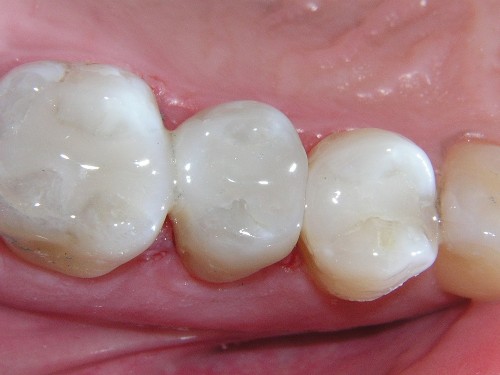
Silver Amalgam Fillings
Silver amalgam fillings, also known as dental amalgam or silver fillings, is a tooth filling material that sometimes sees use in a dental office. Over the years, silver amalgam fillings have fallen out of favor among cosmetic dentists and the general public for a number of reasons:
- Esthetic problem, not tooth color
- Contains mercury, public apprehension about mercury poisoning
- Does not bond to tooth structure, high risk of natural teeth cracking
Patients sometimes request to have the dental amalgam filling removed and replaced with composite resin fillings. Regardless, it is a tried-and-true dental material that is very strong, very resistant to dental cavities, and is successful in high-moisture environments.
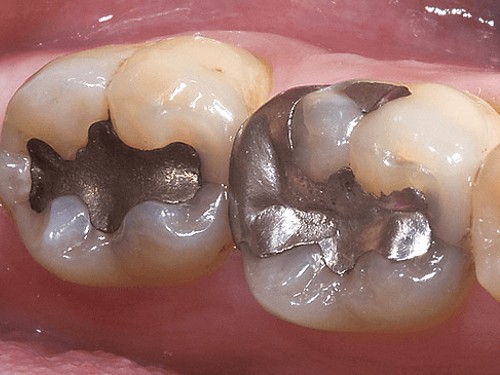
Resin-Modified Glass Ionomer
Resin modified glass ionomer (RMGI) is a hybrid of powdered glass ionomers and composite resin fillings. It is also a permanent white filling and is often used in low-stress areas of the tooth and in areas where there is a high chance of future cavities. The chief benefit of RMGI dental fillings is that it forms strong ionic bonds with minerals in the prepared tooth surface, and it releases fluoride, which will strengthen teeth and prevent dental decay.
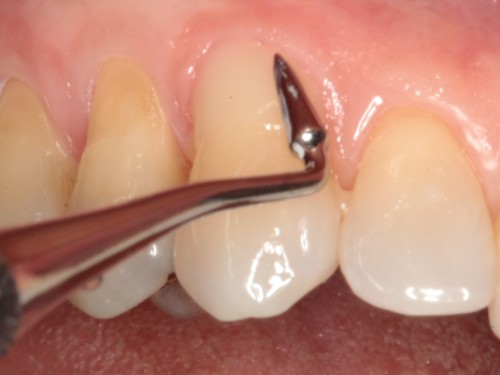
Porcelain Inlays
Porcelain Inlays, also known as porcelain fillings, are permanent indirect filling materials made by a dental laboratory and cemented into place by your Toronto dentist. Inlays are sometimes used in modern dental care, but for a number of reasons have fallen out of favor:
- Inlays require two dental appointments instead of one
- Inlays are more expensive because a lab fee is required
- Inlays rarely have any superior features over modern direct tooth filling materials, like silver filling, plastic resin, or RMGI.
Many patients go with their dentists’ recommendations for direct filling materials, or if necessary, dental crowns.
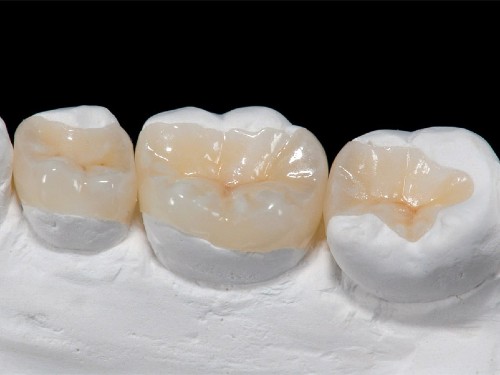
Porcelain Onlays
Porcelain Onlays are a type of dental restoration that is used to repair a damaged or decayed tooth when the damage extends beyond a simple filling but does not warrant a full dental crown. It falls in between these two options and is often referred to as a “partial crown” or “inlay-onlay.”
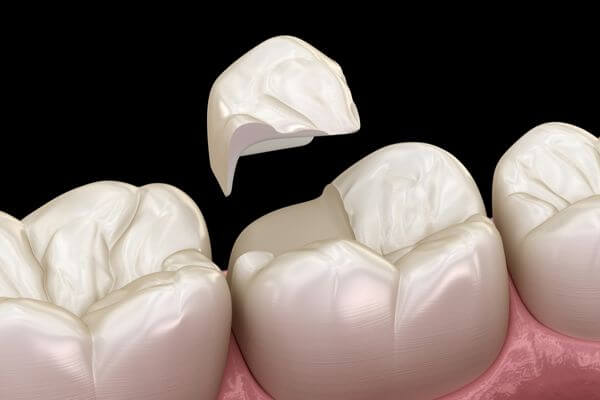
The choice of dental filling material should be made in consultation with your dentist, considering factors such as the location and size of the cavity, aesthetic concerns, durability requirements, and your personal preferences. Your dentist will evaluate your specific needs and guide you in selecting the most suitable filling material for your situation. If you have further questions about Tooth Filling materials, please contact us.
Cost of Teeth Fillings
Whether it is an amalgam filling, composite resin filling, or glass ionomer filling, the cost of any of these Dental Fillings are similar and will depend on the location of the tooth (anterior, bicuspid or molar), as well as the size of the filling, which is translated as the number of “surfaces” involved. Imagine each tooth as a 5 surface box. Each “surface” that gets incorporated will dictate the size (and overall cost) of the tooth filling. Therefore, the cost of a filling can range between $200-460. The codes relevant to dental fillings in the Ontario Dental Association’s Suggested Fee Guide appear as follows:
Permanent Anteriors:
- 23111 – One surface: $200
- 23112 – Two surfaces: $250
- 23113 – Three surfaces: $300
- 23114 – Four surfaces: $370
- 23115 – Five surfaces (maximum surfaces per tooth): $390
Permanent Bicuspids:
- 23311 – One surface: $220
- 23312 – Two surfaces: $275
- 23313 – Three surfaces: $330
- 23314 – Four surfaces: $400
- 23315 – Five surfaces or maximum surfaces per tooth: $420
Permanent Molars:
- 23321 – One surface: $240
- 23322 – Two surfaces: $300
- 23323 – Three surfaces: $360
- 23324 – Four surfaces: $440
- 23325 – Five surfaces or maximum surfaces per tooth: $460
Dental Fillings are considered a basic service under all dental insurance plans and should be covered to your maximum insurable limit, but be sure to find out from your dental insurance plan provider how much you are eligible for before going ahead with dental treatment. Our fees are consistent with the ODA Fee Guide.
For patients without dental insurance, Atlas Dental is pleased to offer dental financing through Dentalcard. Affordable payment plans start at 7.95% for terms of 6 months to 6 years. To learn more about Dentalcard dental treatment financing, follow this link.
What Are The Steps In The Tooth Filling Procedure?
The tooth filling procedure typically involves several steps to effectively remove tooth decay and restore the tooth. While specific techniques may vary depending on the dentist’s approach and the type of filling material used, the general steps involved in a tooth filling procedure are as follows:
- Evaluation and local anesthetic: Please review these pre-operative instructions before your visit. Your dentist will begin by conducting a thorough examination of your teeth, possibly including dental X-rays, to identify the location and extent of the decay. Before the Dental Filling procedure begins, the area around the affected tooth will be numbed using a local anesthetic to ensure your comfort throughout the process.
- Tooth preparation: Once the anesthesia has taken effect, the dentist will use a dental drill, air abrasion device, or laser to remove the decayed portion of the tooth. The dentist will carefully remove all decayed and compromised tooth structure, leaving behind a clean and healthy area for the filling.
- Etching and bonding (if using composite resin): If a tooth-colored filling material like composite resin is being used, the dentist may etch the tooth surface with a mild acidic solution to create a rough texture. This helps the filling material bond securely to the tooth. A bonding agent is then applied to the prepared tooth surface before the filling material is placed.
- Layering the filling material: The dentist will apply the chosen filling material in layers, ensuring each layer is properly shaped and hardened before adding the next. This layering technique helps achieve the desired shape and stability of the filling. The dentist will use specialized tools to sculpt and shape the filling material to match the natural contours of the tooth.
- Curing and hardening: For tooth-colored fillings like composite resin, a curing light is used to harden each layer of the filling material. The light activates a chemical reaction in the filling material, causing it to harden and bond to the tooth. Multiple layers may be applied and cured until the desired shape and thickness of the filling are achieved.
- Bite adjustment and polishing: After the Dental Filling material has hardened, the dentist will check your bite and make any necessary adjustments to ensure proper alignment and comfort. Excess material may be trimmed, and the filling is polished to provide a smooth and natural appearance.
- Post-procedure instructions: Your dentist will provide you with post-operative instructions on caring for your newly filled tooth, including proper oral hygiene practices, dietary recommendations, and any restrictions on chewing or consuming hot/cold foods. It is important to follow these instructions to promote the longevity and effectiveness of the filling.
The tooth filling procedure is typically straightforward and can often be completed in a single dental visit. The duration of the procedure may vary depending on factors such as the size and location of the cavity, the type of filling material used, and the complexity of the case. If you have further questions about the Dental Filling procedure, please contact us.
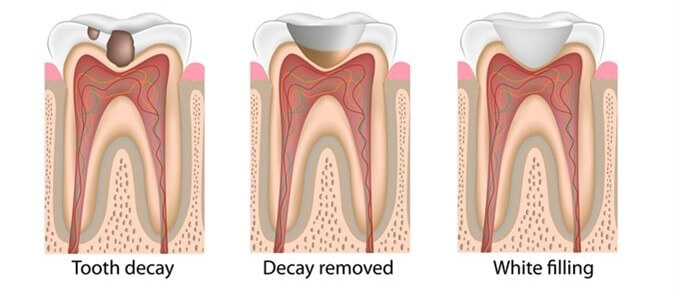
Can I Have A Tooth Filling If I Am Pregnant?
Receiving a tooth filling while pregnant is generally considered safe and necessary to maintain oral health. It is important to address dental issues, including cavities, during pregnancy to prevent potential complications and ensure the well-being of both the mother and the developing baby. However, there are a few considerations to keep in mind:
- Timing: Ideally, dental treatments, including Dental Fillings, should be scheduled during the second trimester of pregnancy. By this time, the risk of potential complications is lower, and the mother is likely to be more comfortable during the procedure. However, if urgent dental care is required, it can be performed at any stage of pregnancy.
- Communication with your dentist and healthcare provider: It is crucial to inform your dentist and healthcare provider that you are pregnant. They can collaborate to ensure that any necessary precautions or modifications are taken to safeguard your well-being and that of your baby. Your dentist may consult with your healthcare provider to determine the best approach for your specific case.
- Local anesthesia: Local anesthesia, such as lidocaine, is commonly used during tooth filling procedures to numb the area and minimize discomfort. Research indicates that local anesthesia is generally safe during pregnancy, especially when administered in recommended doses. The amount of anesthesia used will be carefully controlled to minimize any potential risks.
- Radiographs (X-rays): Dental X-rays are typically avoided during pregnancy, especially during the first trimester when the baby’s organs are developing. However, if X-rays are necessary for an accurate diagnosis, your dentist will take precautions to minimize exposure, such as using lead aprons and thyroid collars to protect you and your baby.
- Filling material selection: The choice of filling material may be influenced by your pregnancy. Composite resin fillings, which are tooth-colored and free of mercury, are commonly used and considered safe during pregnancy. Amalgam fillings, which contain small amounts of mercury, may also be an option, as the mercury release from dental amalgam fillings is minimal and within safe limits. However, if you have concerns about amalgam fillings, discuss them with your dentist, and they can help you make an informed decision.
Maintaining good oral hygiene practices, including regular dental check-ups and prompt treatment of cavities, is essential for overall health during pregnancy. Poor oral health has been associated with an increased risk of certain pregnancy complications, such as preterm birth and low birth weight. By addressing tooth decay and receiving necessary dental treatments, including tooth fillings, you can promote your oral health and support a healthy pregnancy. For more information about Tooth Fillings during pregnancy, please contact us.
How Long Does A Tooth Filling Last?
The lifespan of a tooth filling can vary depending on several factors, including the type of filling material used, the location and size of the filling, oral hygiene practices, biting and chewing habits, and individual variations. On average, Dental Filling can last for several years, and with proper care, they can often last a decade or more.
Here are some general expectations for the durability of common types of tooth fillings:
- Amalgam fillings: Amalgam fillings, also known as silver fillings, are composed of a mixture of metals, including mercury, silver, tin, and copper. They are known for their durability and can last for 10 to 15 years or even longer with proper oral hygiene and regular dental check-ups. However, over time, amalgam fillings may show signs of wear, such as fracturing or staining.
- Composite resin fillings: Composite resin fillings are tooth-colored and blend in naturally with the surrounding teeth, making them a popular choice for visible areas of the mouth. While composite fillings may not be as long-lasting as amalgam fillings, advancements in materials have improved their durability. On average, composite resin fillings can last between 5 to 10 years with proper care.
It’s important to note that while dental fillings are designed to be long-lasting, they may require replacement or repair over time. Regular dental check-ups are crucial for monitoring the condition of your fillings and identifying any signs of wear, deterioration, or recurrent tooth decay. Your dentist will assess the integrity of your fillings during routine examinations and recommend any necessary treatments or repairs. If you have further questions about Tooth Fillings, please contact us.
What Are Common Problems with A Tooth Filling?
While tooth fillings are generally effective and durable, there are some common problems that can occur with fillings over time. These issues can vary depending on the type of filling material used, oral hygiene practices, biting and chewing habits, and other factors. It’s important to be aware of these potential problems and promptly address them to maintain the health and longevity of your dental fillings. Here are some common problems that can arise with tooth fillings:
- Wear and tear: Over time, Dental Fillings can experience normal wear and tear due to biting and chewing forces. This can lead to small cracks, fractures, or rough edges on the filling surface, which may require repair or replacement.
- Recurrent tooth decay: If proper oral hygiene practices are not maintained or if there is inadequate sealing of the filling, new decay can develop around the edges of the filling or underneath it. This is known as recurrent decay and may require the removal of the old filling and placement of a new one.
- Filling dislodgement: In some cases, fillings can become dislodged or fall out. This can happen due to factors such as chewing on hard or sticky foods, trauma to the tooth, or natural wear over time. If a filling becomes loose or dislodged, it is important to contact your dentist promptly to have it repaired or replaced to prevent further damage or sensitivity.
- Tooth sensitivity: It is common to experience tooth sensitivity after a filling procedure, especially to hot or cold temperatures. However, persistent or increased sensitivity could indicate issues such as an improperly sealed filling, exposed dentin, or nerve irritation. Your dentist can evaluate the sensitivity and recommend appropriate treatment if needed.
- Allergic reactions or sensitivity: Some individuals may develop allergic reactions or sensitivity to certain filling materials, such as amalgam (containing mercury) or other metals. If you experience symptoms such as persistent irritation, inflammation, or allergic reactions after a Dental Filling procedure, inform your dentist immediately to explore alternative options.
- Cracked tooth: In rare cases, a filling can contribute to a cracked tooth, especially if the filling is large or if there is significant pressure exerted during biting or chewing. A cracked tooth may cause discomfort, pain, or sensitivity and may require additional dental treatments such as a crown or root canal therapy.
Regular dental check-ups are crucial for monitoring the condition of your fillings and detecting any problems early on. Your dentist will evaluate the integrity of your fillings during routine examinations and address any issues promptly to prevent further complications. It’s important to maintain good oral hygiene practices, avoid excessive biting forces, and follow any specific care instructions provided by your dentist. If you have further questions about common problems with Tooth Fillings, please contact us.
We also think you’ll like…
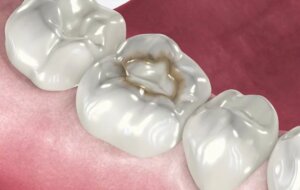
Loose Tooth Filling
Loose Tooth Filling What Is A Loose Tooth Filling? A dental filling is a common treatment used to fix a tooth that has been damaged
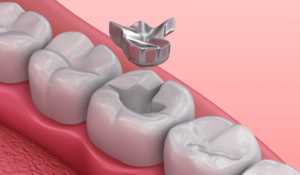
Amalgam Filling
Amalgam Filling What Is An Amalgam Filling? An Amalgam Filling is a dental restorative material used to repair teeth that have been compromised by dental
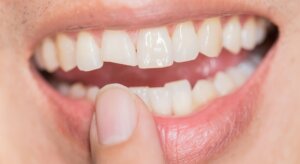
Broken Tooth
Broken Tooth What Is A Broken Tooth? A Broken Tooth refers to a tooth that has been cracked, fractured or chipped. It can be caused
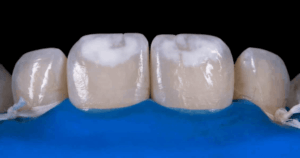
White Spot Lesions
White Spot Lesions What Are White Spot Lesions? White spot lesions, also known as enamel decalcifications, are common dental conditions characterized by chalky white patches
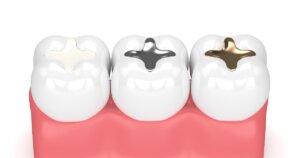
Dental Filling Post-Operative Instructions
Dental Filling Post-Operative Instructions What You Should Do After Your Dental Filling Appointment A tooth filling is the cosmetic dentist’s primary method of repairing teeth
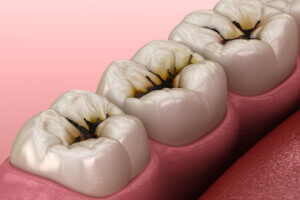
Cavity
Cavity What Is A Cavity? A Cavity, also known as dental caries, is a common dental problem that affects people of all ages. It is

